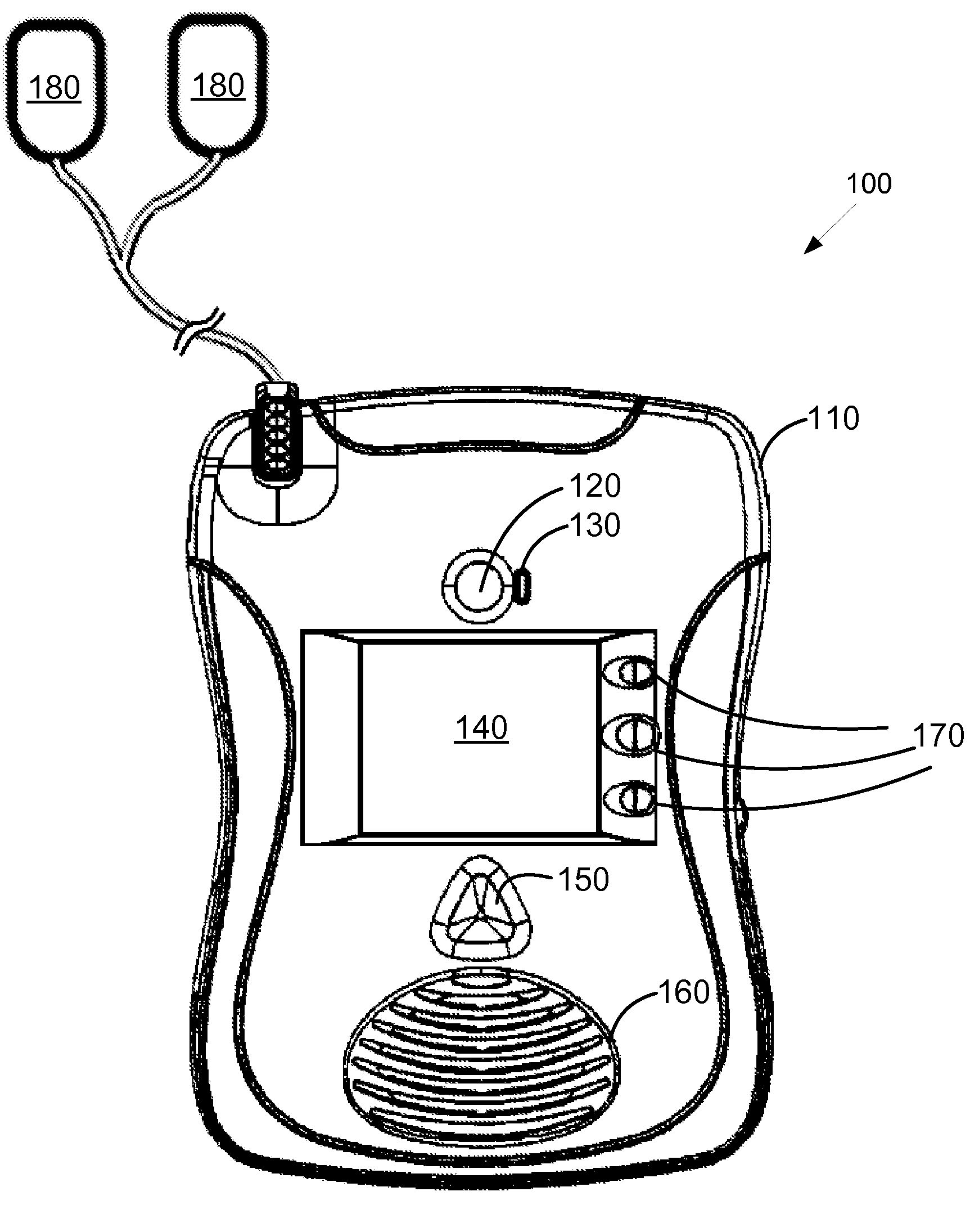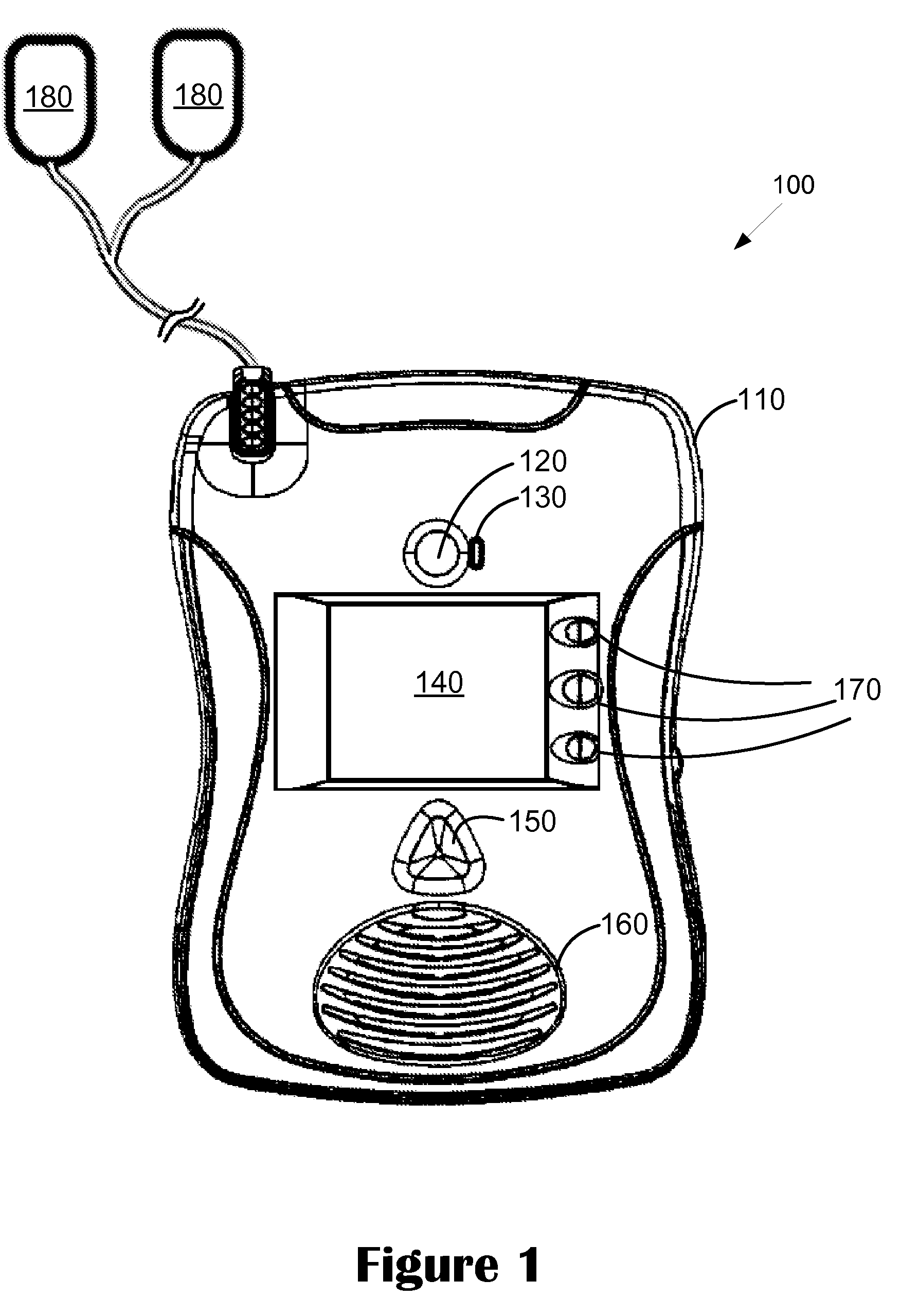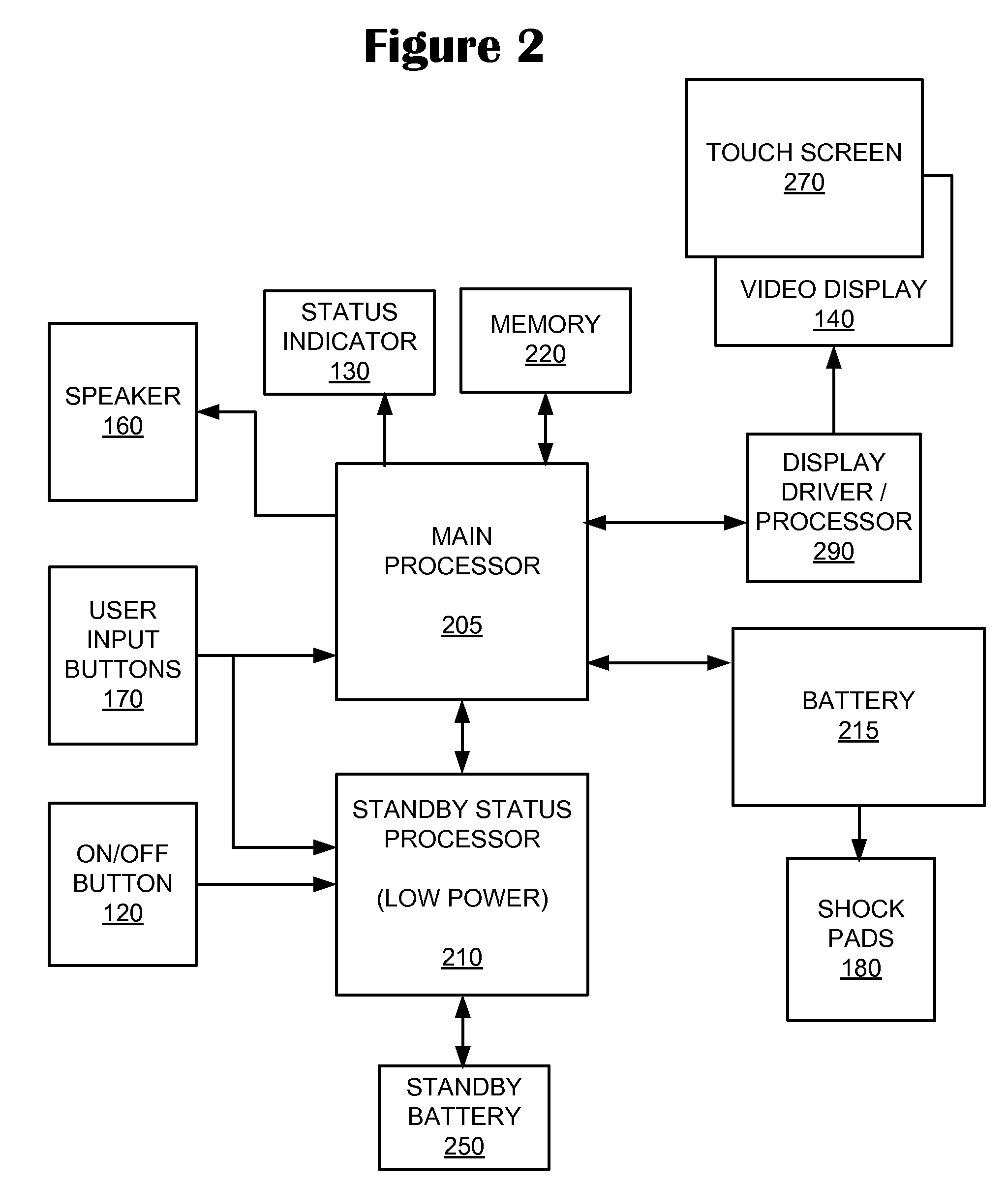System and Method for Conditioning a Lithium Battery in an Automatic External Defibrillator
- Summary
- Abstract
- Description
- Claims
- Application Information
AI Technical Summary
Benefits of technology
Problems solved by technology
Method used
Image
Examples
Embodiment Construction
[0021]An inventive system and method can provide a conditioning discharge to drive off salt crystals from an automatic external defibrillator (AED) battery (i.e., in order to prevent the effects of passivation). An advantage of this inventive system is that it can counteract the effects of passivation without requiring any new hardware or physical modification of the battery. In this way, the inventive method is applicable to all commercially available batteries, and is especially suitable for lithium batteries.
[0022]One aspect of this invention is the realization that the rate of battery passivation increases as a function of several parameters, including the age of the battery and the remaining capacity of the battery. Thus the inventive method can utilize a progressive conditioning schedule or formula designed to combat the gradually increasing rate of battery passivation with battery age and repeated use. For AEDs, it should be noted that battery use is not limited to the delive...
PUM
 Login to View More
Login to View More Abstract
Description
Claims
Application Information
 Login to View More
Login to View More - R&D
- Intellectual Property
- Life Sciences
- Materials
- Tech Scout
- Unparalleled Data Quality
- Higher Quality Content
- 60% Fewer Hallucinations
Browse by: Latest US Patents, China's latest patents, Technical Efficacy Thesaurus, Application Domain, Technology Topic, Popular Technical Reports.
© 2025 PatSnap. All rights reserved.Legal|Privacy policy|Modern Slavery Act Transparency Statement|Sitemap|About US| Contact US: help@patsnap.com



